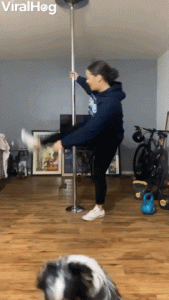
So, you’re staring at a pile of beautiful hardwood planks, a blank floor, and a daunting “DIY hardwood install” task ahead. Don’t panic! You’re not alone. Many homeowners dream of the warmth and elegance of hardwood floors but are intimidated by the installation process.
This guide is designed to demystify the process, turning you from a “dummy” into a confident hardwood installer.
Why DIY Hardwood?
- Cost Savings: Professional installation can significantly increase the overall project cost. DIY saves you money.
- Personal Satisfaction: The sense of accomplishment from installing your own floors is unparalleled.
- Control Over the Process: You dictate the pace and ensure the job is done to your standards.
Before You Begin: Essential Preparations
- Gather Your Tools:
- A rubber mallet
- A tapping block
- A pry bar
- A measuring tape
- A circular saw or a miter saw
- A chalk line
- A level
- A moisture meter (crucial!)
- Spacers
- A flooring nailer (optional, but highly recommended for engineered and solid hardwood)
- Safety glasses and gloves
- Acclimate the Wood:
- Hardwood is a natural material that expands and contracts with humidity changes.
- Acclimation involves allowing the wood to adjust to the room’s temperature and humidity for several days (typically 3-5 days, but follow manufacturer recommendations).
- Stack the planks in the room where they will be installed.
- Use a moisture meter to ensure the subfloor and hardwood moisture levels are within acceptable ranges.
- Prepare the Subfloor:
- The subfloor must be clean, level, and dry.
- Remove any existing flooring, nails, or debris.
- Repair any damaged areas or uneven spots.
- For concrete subfloors, a moisture barrier is crucial.
- For plywood subfloors, ensure the subfloor is securely fastened.
- Plan Your Layout:
- Determine the direction of the planks. Typically, they run parallel to the longest wall or perpendicular to the floor joists.
- Snap a chalk line to establish a straight starting line.
- Consider the width of the last row; avoid very narrow pieces.
Step-by-Step Hardwood Installation
- Install the Underlayment (If Necessary):
- Underlayment provides a moisture barrier, sound absorption, and a smoother surface.
- Roll out the underlayment and secure it with tape.
- Start the First Row:
- Begin along your chalk line, leaving a gap of about 3/8-inch to 1/2-inch between the planks and the wall (expansion gap).
- Use spacers to maintain this gap.
- For nail down installation, use your flooring nailer at a 45 degree angle through the tongue of the plank.
- For floating floors, engage the tongue and groove system.
- Continue Laying the Planks:
- Stagger the end joints of the planks to create a more natural look.
- Use the tapping block and rubber mallet to gently tap the planks into place.
- Ensure a tight fit between the planks.
- For nail down floors, nail every 6-8 inches.
- Cut the Last Row:
- Measure the remaining space and cut the planks to fit, leaving the expansion gap.
- Use a pry bar to gently push the last row into place.
- Install the Transition Pieces and Baseboards:
- Transition pieces cover the gaps between different flooring types or levels.
- Baseboards cover the expansion gaps along the walls and provide a finished look.
Common Mistakes to Avoid
- Skipping Acclimation: This can lead to warped or buckled floors.
- Ignoring the Subfloor: An uneven or unstable subfloor will result in an uneven and unstable hardwood floor.
- Incorrect Expansion Gap: Without proper expansion gaps, the floor will buckle or warp.
- Rushing the Process: Take your time and double-check your measurements.
- Incorrect Nailing: Incorrect nailing can cause squeaking and loose boards.
- Using the wrong type of nailer.
Types of Hardwood Installation
- Nail-Down: This method is typically used for solid hardwood and some engineered hardwood.
- Glue-Down: This method is used for engineered hardwood and some solid hardwood, particularly over concrete subfloors.
- Floating: This method is used for engineered hardwood and laminate flooring. The planks are clicked together and “float” over the subfloor.
Maintaining Your Hardwood Floors
- Regularly sweep or vacuum to remove dirt and debris.
- Use a damp mop with a cleaner specifically designed for hardwood floors.
- Avoid using excessive water or harsh chemicals.
- Place mats at entryways to prevent dirt and moisture from being tracked onto the floors.
- Consider having the floors refinished every several years.
By following these steps and avoiding common mistakes, you can successfully install your own hardwood floors and enjoy the beauty and warmth they bring to your home. Remember to take your time, be patient, and don’t be afraid to ask for help if you need it. Happy flooring!
